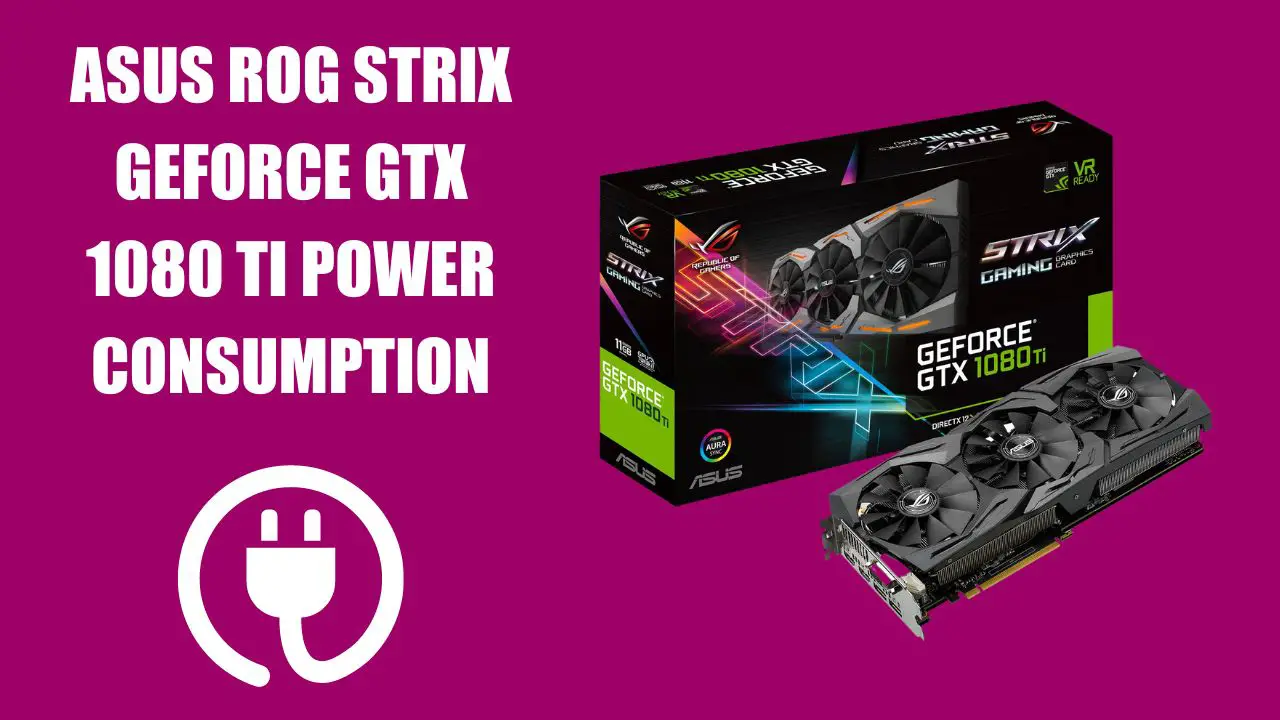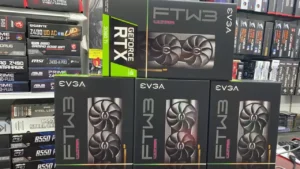The Asus Rog Strix Geforce GTX 1080 Ti has a power consumption of around 275W under typical gaming load and up to 330W when overclocked.
It requires two 8-pin power connectors to run. That’s quite a lot of power for a graphics card, but it also delivers great performance and features.
Can the Asus Rog Strix Geforce GTX 1080 Ti be overclocked without consuming excessive power?
Overclocking the Asus Rog Strix Geforce GTX 1080 Ti will inevitably increase its power consumption, but how much depends on the settings you use and the quality of your card.
Overclocking the card to around 2000 MHz on the core and 12 Gbps on the memory can push its power consumption up to 330W under gaming load, which is about 20% more than its default power target of 275W.
Limiting the voltage increase and power target while finding the optimal balance between clock speed and stability can lead to a performance boost of approximately 10% on average.
When overclocking your card, it is important to monitor its temperatures and fan noise since this process generates more heat and requires additional cooling
What is the minimum power supply requirement for running the Asus Rog Strix Geforce GTX 1080 Ti?
The card requires a minimum system power of 600W. However, some online sources recommend a power supply unit of 650W or higher to handle the card’s power consumption when under load, especially if you plan to overclock it.
Ensure that your power supply has enough eight-pin connectors as the card requires two of them.
Furthermore, aim for a power supply with a high-efficiency rating (like 80 Plus Gold or Platinum), excellent build quality, and a reliable brand reputation.
A quality power supply guarantees system stability and longevity while also preventing potential damage from power surges or failures.
How does the power consumption of the Asus Rog Strix Geforce GTX 1080 Ti compare to its predecessor, the GTX 980 Ti?
The Asus ROG Strix GeForce GTX 1080 Ti consumes more power than its predecessor, the GTX 980 Ti. The GTX 980 Ti has a maximum power usage of 250 watts, while the GTX 1080 Ti can use 250 watts during gaming and up to 375 watts under intense overclocking. The elevated power consumption stems from the newer architecture and increased clock speeds of the GTX 1080 Ti, which demand more energy for stable performance. Despite contributing to a higher electricity cost, this also yields improved performance and enhanced frame rates in contemporary games.
What kind of power connectors does the Asus Rog Strix Geforce GTX 1080 Ti require?
Asus Rog Strix Geforce GTX 1080 Ti requires two eight-pin power connectors to run.
These are also known as 6+2-pin connectors, as they consist of a six-pin connector with an additional two-pin connector that can be attached or detached.
How much heat does the Asus Rog Strix Geforce GTX 1080 Ti generate under full load?
The card can reach temperatures of approximately 70°C on the GPU and 90°C on the VRM while running at its default settings.
When the Asus Rog Strix Geforce GTX 1080 Ti is overclocked, the temperatures can rise to 75°C on the GPU and 100°C on the VRM.
How does the power consumption of the Asus Rog Strix Geforce GTX 1080 Ti compare to its main competitor, the NVIDIA Titan Xp?
Both graphics cards need a recommended power supply of 600 watts and have a maximum power consumption of 250 watts.
The Asus Rog Strix Geforce GTX 1080 Ti possesses a slightly lower base clock speed and fewer CUDA cores compared to the NVIDIA Titan Xp, potentially resulting in slightly reduced power consumption.
Nevertheless, the precise power consumption of both graphics cards under load is uncertain and could differ based on the specific system setup and usage conditions.
In general, despite potential slight variances in power consumption, both of these top-tier graphics cards necessitate a significant amount of power to function at their maximum capacity.
How much noise does the cooling system of the Asus Rog Strix Geforce GTX 1080 Ti generate under full load?
At its default settings, the card operates with a noise level of approximately 39 dB(A). When overclocked, the noise level increases to 41 dB(A).
While this is a bit louder than certain another custom GTX 1080 Ti cards, it still falls within an acceptable range for most users.
The primary sources of noise are the fans’ airflow and motor noise, resulting in a subtle humming sound.
Additionally, the card offers a semi-passive mode that shuts off the fans when the card is not in use or under light load, effectively eliminating any noise.
Furthermore, the card includes a feature known as 0dB Technology, enabling manual adjustment of the fan speed and noise level based on personal preference.








